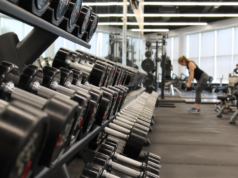In the realm of fitness, a transformative approach is gaining ground, and it’s called Intuitive Movement. For those unfamiliar with this concept, let’s break it down – what it is, why we need it, and the remarkable benefits it holds for our well-being.
What is Intuitive Movement?
Intuitive Movement is a fitness philosophy rooted in the idea of listening to your body’s signals and responding with mindful, personalized movement. Unlike rigid exercise routines, it encourages individuals to connect with their bodies on a deeper level, recognizing that each person’s needs, strengths, and limitations are unique. At its core, it’s about embracing a more flexible and intuitive approach to physical activity.
Why Do We Need Intuitive Movement?
In a world filled with fitness trends and norms, Intuitive Movement steps in to offer a refreshing alternative. The American Council on Exercise (ACE) underscores the need for this approach by highlighting the uniqueness of every body. Rather than adhering strictly to prescribed routines, Intuitive Movement empowers individuals to break free from the constraints of traditional fitness expectations. It’s about cultivating a positive relationship with exercise, fostering self-trust, and promoting a shift away from external pressures towards internal well-being.
What Does Intuitive Movement Do for Us?
- Mindful Exercise for Mental Well-being:
Intuitive Movement places a strong emphasis on mindfulness during exercise. Harvard Health Blog notes that being fully present and engaged in physical activity enhances the mind-body connection. This mindfulness not only contributes to mental well-being but also acts as a stress-relief mechanism. By tuning into the body’s responses, individuals can tailor their workouts to align with their mental and emotional states, fostering a holistic approach to fitness.
- Body Positivity and Self-Love:
One of the powerful outcomes of Intuitive Movement is its alignment with body positivity and self-love. The National Eating Disorders Association (NEDA) emphasizes that this approach encourages individuals to appreciate their bodies for what they can do and how they feel, rather than fixating on external appearances or unrealistic fitness goals. It promotes a compassionate and inclusive attitude towards oneself.
- Breaking Free from Traditional Fitness Norms:
Intuitive Movement challenges the one-size-fits-all mentality prevalent in traditional fitness norms. Psychology Today suggests that individuals practicing Intuitive Movement have the freedom to explore various forms of movement without feeling confined to predetermined exercise regimens. It’s about discovering what brings joy and feels right for your body on any given day, allowing for a more dynamic and individualized approach to fitness.
How to Incorporate Intuitive Movement into Your Routine:
For those intrigued by the idea of Intuitive Movement, incorporating it into your routine involves a shift in mindset. Begin by paying attention to how different forms of movement make you feel. Experiment with various activities, be it a nature walk, a dance session, or a gentle yoga flow. Listen to your body’s cues and allow yourself to rest when needed. Seeking guidance from fitness professionals who embrace Intuitive Movement principles can provide valuable insights and support on this journey.
In conclusion, Intuitive Movement opens the door to a more personalized and mindful approach to fitness. It’s about honoring your body’s unique needs, cultivating a positive relationship with exercise, and embracing a holistic perspective on well-being. As you embark on this journey, remember that Intuitive Movement is not a rigid set of rules; it’s an invitation to rediscover the joy of movement and prioritize your health in a way that feels authentic and empowering.












































